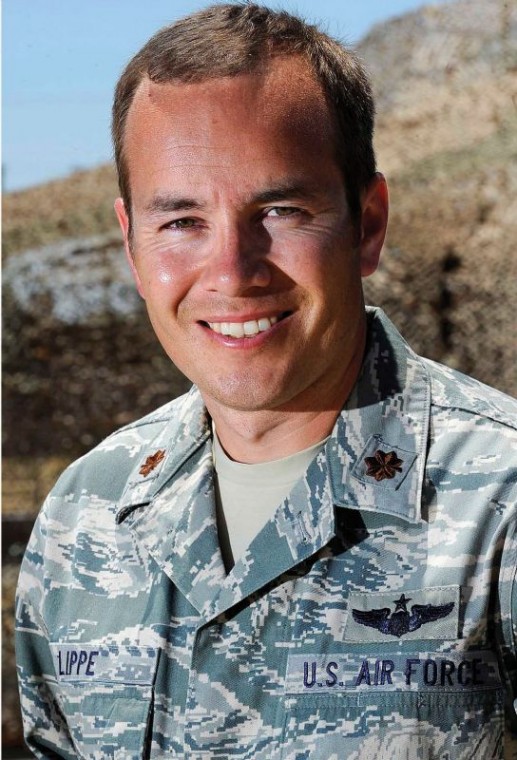By Air Force Staff Sgt. Jessica Switzer
Special to the Pinnacle
SBHS grad Joe Lippe, son of a Paicines couple, participates in
11-day excercise to prepare military to help in natural disasters
worldwide
Whether delivering critical food supplies to refugees in Darfur,
helping with evacuation efforts following Hurricane Ike or helping
British troops transition out of Basra, the son of a Paicines
couple, and his unit, are quickly becoming the 9-1-1 first
responders for disasters and emergencies around the world.
By Air Force Staff Sgt. Jessica Switzer
Special to the Pinnacle
SBHS grad Joe Lippe, son of a Paicines couple, participates in 11-day excercise to prepare military to help in natural disasters worldwide
Whether delivering critical food supplies to refugees in Darfur, helping with evacuation efforts following Hurricane Ike or helping British troops transition out of Basra, the son of a Paicines couple, and his unit, are quickly becoming the 9-1-1 first responders for disasters and emergencies around the world.
Air Force Maj. Joe N. Lippe, son of Joe and Linda Lippe of Airline Highway, Paicines, put those rapid response skills to the test during an 11-day joint exercise called Hydra. The exercise brought in units from the Army, Air Force and Marine Corps to practice setting up rudimentary bases and airfields, airdropping people and supplies, providing mid-air refueling services, and evacuating those injured in a simulated natural disaster.
Lippe is a contingency response element commander with the 573rd Global Support Squadron at Travis Air Force Base, Calif.
“My job as the contingency response element commander was to take a group of 40 to 100 men and women and deploy in a matter of hours to an austere airfield,” said the 1992 Hollister High School graduate. Lippe earned a bachelor’s degree in 1999 from San Jose State University.
“Once we were deployed, we would establish an air terminal to load an unload personnel and cargo from the aircraft,” he said.
The scenario for Hydra ’09 was a 6.0 earthquake in a fictional allied country. The devastation from the quake extended up to 100 miles out from the epicenter. This scenario allowed the exercise to spread over three locations to provide a maximum of training opportunities. A part of the exercise, called Global Medic, focused on treating and moving the victims of the earthquake.
“This operation allowed me and my team to hone our war-fighting skills,” said Lippe. “It forced us to operate out of an airfield with minimal facilities and resources, and exercise all of our skills and equipment.”
The exercise, only in its third year, had more than 750 participants from 16 different units, some from the Army and Marine Corps, all worked together to overcome the difficulties related to responding to crisis scenarios. One of the key elements was to bring together the vast array of units and job specialties needed to respond to a major crisis.
“The contingency response mission is unique from other missions because it requires assembling a team from very diverse career fields to come together and work as a team to open an airfield,” Lippe said. “Additionally, we have to be ready to deploy ourselves and all of our equipment in only 12 hours.”
Being part of the forces required to respond at a moment’s notice to events around the world often results in last minute deployments to places with very few of life’s luxuries can be hard, but Lippe said he knows that these hardships pay off in the end by saving lives when disaster strikes.










